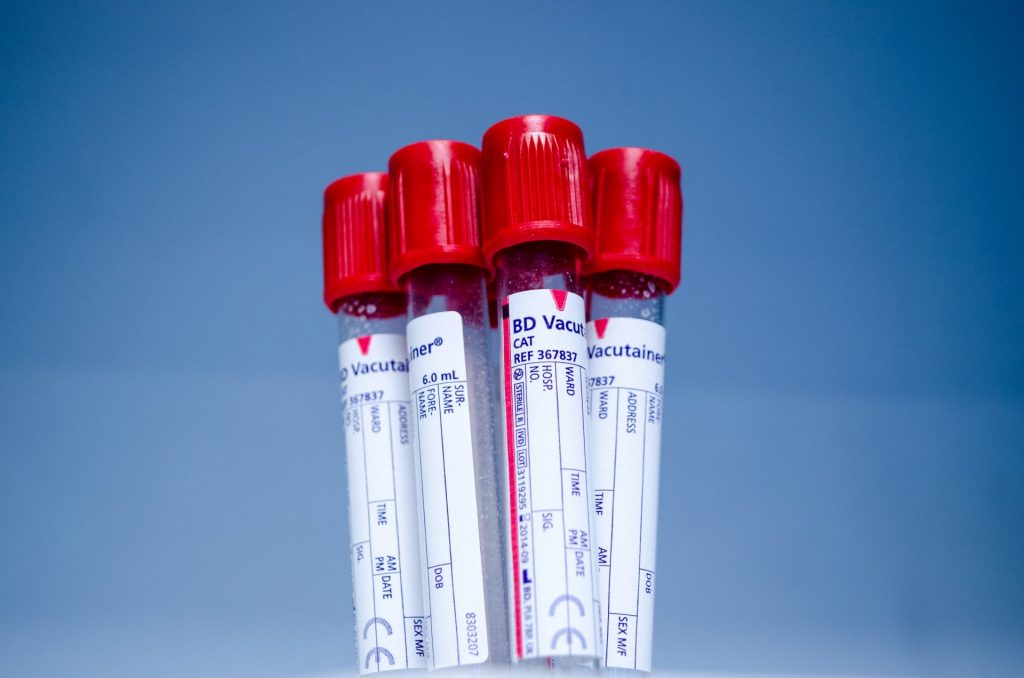A coagulation profile (coags) includes INR, APTT, platelets and fibrinogen. It is a screening test for abnormal blood clotting because it examines the factors most often associated with a bleeding problem. It does not cover all causes of bleeding tendencies.
How is a coagulation profile test performed?
A coagulation profile is a blood test. It requires a few mililitres of blood from a vein, and it is important that the blood sample tube is filled to the correct level – otherwise false readings may occur.
Why would you need to get a coagulation profile?
A coagulation profile may be performed to confirm normal clotting function before a procedure which may cause bleeding, or in conditions associated with bleeding, for example from the respiratory, urinary, or gastrointestinal tract.
A coagulation profile may also be requested by your doctor if there is a concern about easy bruising or bleeding. This may happen because of hereditary conditions such as Haemophilia, or acquired conditions such as liver failure, or severe infections.
A condition called Disseminated Intravascular Coagulation (DIC) may occur in critically ill patients, from a variety of possible causes. DIC affects all the components of the coagulation profile.
Envenomation from some types of snakebite may also cause a coagulopathy – an abnormality of the normal clotting process. Warfarin therapy is a medical cause of easy bleeding, and shows up in the INR component of the coagulation profile.
Get on top of your general health
Find and instantly book affordable GPs within Australia
Test results explained
The Coagulation profile consists of a number of components, including:
- APTT (activated partial thromboplastin time) – measures one part of the clotting pathway known as the “intrinsic pathway” – it is compared against a sample of normal blood, the “control” value. It is increased by therapy with intravenous heparin, haemophilia, or DIC.
- INR (international normalised ratio) – measures one part of the clotting pathway known as the “extrinsic pathway” – it is increased by warfarin therapy, liver dysfunction, or DIC.
- Platelet Count – the number of platelets in the bloodstream; it is also a routine component of the Full Blood Count(FBC)
- Fibrinogen – this protein is a precursor to fibrin, which is an essential part of a blood clot. Fibrinogen may be consumed by conditions such as DIC or some snakebite envenomations. Decreased fibrinogen results in an increased bleeding tendency.
- D-dimer is sometimes included – this is a product of clot breakdown, and is increased in conditions of increased clotting activity in the body, but is relatively non-specific because it is often elevated due to different reasons.
[sc_fs_multi_faq headline-0=”p” question-0=”What are some conditions that can cause blood coagulation problems?” answer-0=”Some conditions that can cause coagulation problems include thrombophilia, when the blood is clotting more than normal. On the other hand is hemophilia, when the blood is not able to clot normally. Other conditions like liver disease can also cause coagulation problems.” image-0=”” headline-1=”p” question-1=”Who can help detect coagulation problems?” answer-1=”Hematologists are the doctors who specialize in treating blood disorders. Their responsibilities include diagnosing patients through the right tests, and treating diseases while prescribing medications or offering dietary advice.” image-1=”” count=”2″ html=”true” css_class=””]
The specific results of the coagulation profile wil help your doctor to decide whether any further investigations (tests) are required.
Get on top of your general health
Find and instantly book affordable GPs within Australia
Related specialists
- General Practitioner (GP)
- Haematologist
- General Physician
- Emergency Physician
- General Surgeon
- Vascular Surgeon
- Gastroenterologist
- Urologist
- Respiratory Physician
- Intensivist
- Paediatrician
- Oncologist
- Gynaecologist
- Anaesthetist
- Neurologist
Related procedures
- Blood Test (venesection)
- Intravenous Cannulation
- Cystoscopy
- Lumbar puncture
- Endoscopy of the Upper Gastrointestinal Tract
- Colonoscopy
- Endoscopic Retrograde Cholangiopancreatography (ERCP)
- Pre-operative Anaesthetic assessment
- Blood Transfusion
- Bronchoscopy
Related tests
- APTT
- INR
- Prothrombin Time (PT)
- Bleeding Time
- Platelet Count
- D-dimer
- Blood Group or Crossmatch
- Full Blood Count
- Liver Function Tests
- Faecal Occult Blood (FOB)
- Urinalysis
Also known as
- Coagulation studies
- Clotting studies
- ‘Coags’
A: Use HealthEngine to find and book your next Haematologist appointment. Click on the following locations to find a Haematologist clinic in your state or territory.
This article is for informational purposes only and should not be taken as medical advice. If in doubt, HealthEngine recommends consulting with a registered health practitioner.
All content and media on the HealthEngine Blog is created and published online for informational purposes only. It is not intended to be a substitute for professional medical advice and should not be relied on as health or personal advice. Always seek the guidance of your doctor or other qualified health professional with any questions you may have regarding your health or a medical condition. Never disregard the advice of a medical professional, or delay in seeking it because of something you have read on this Website. If you think you may have a medical emergency, call your doctor, go to the nearest hospital emergency department, or call the emergency services immediately.








